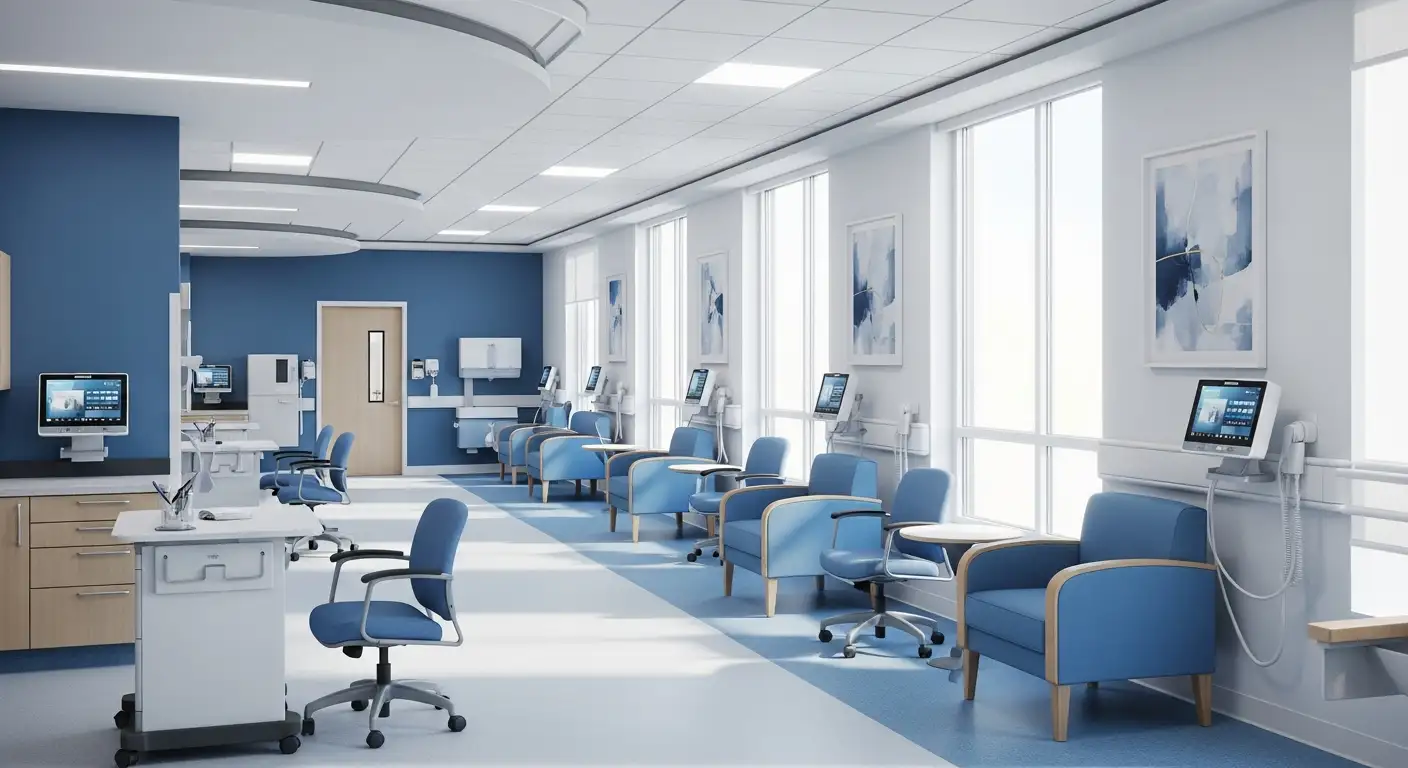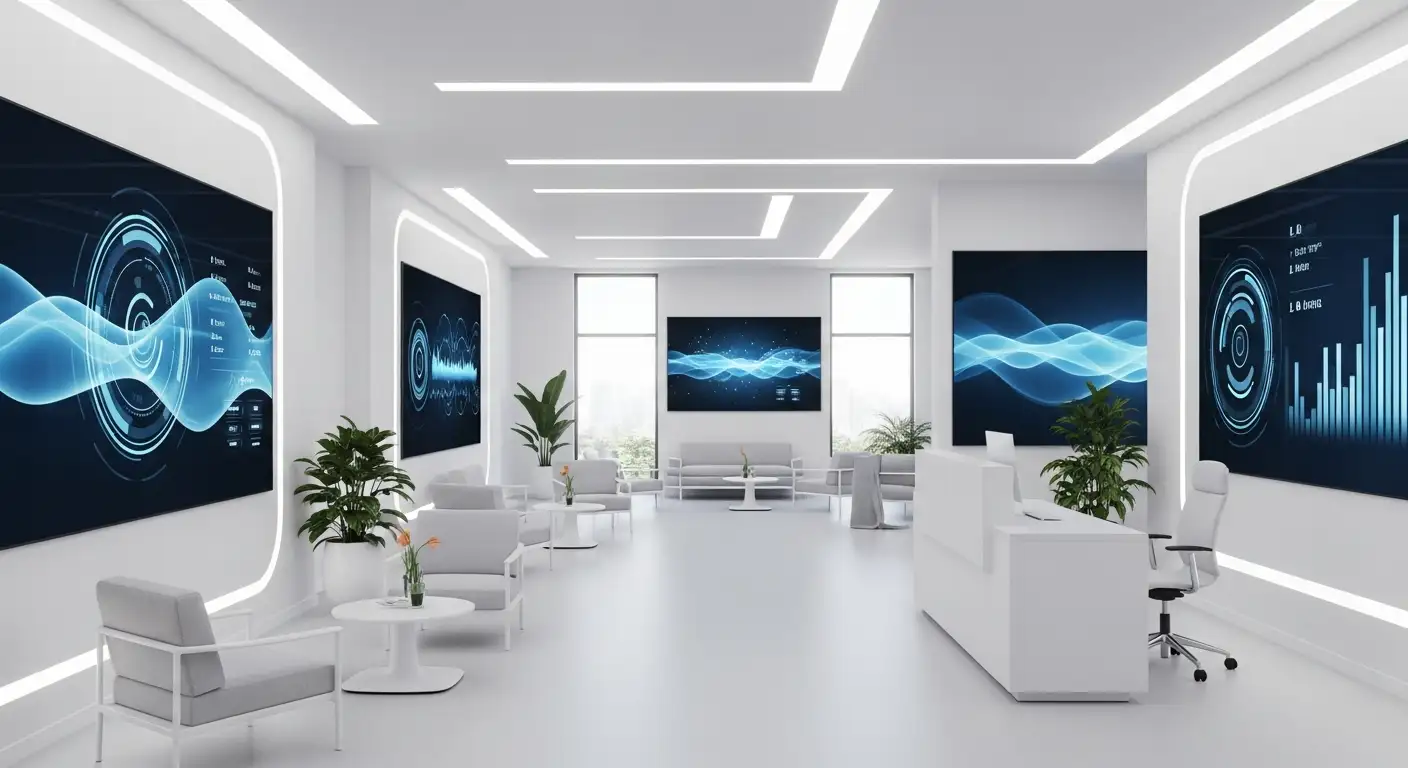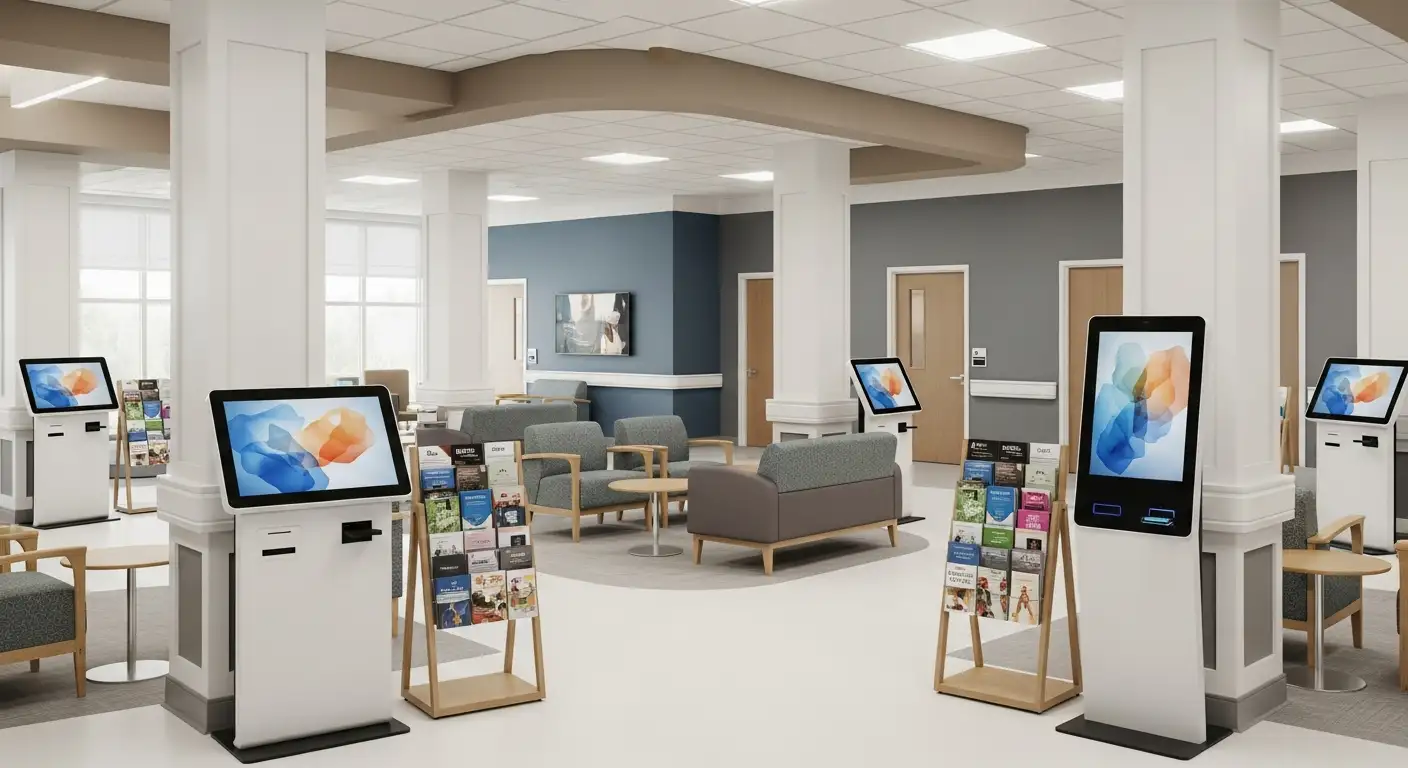How Remote Monitoring Works for Long-Term Wellness
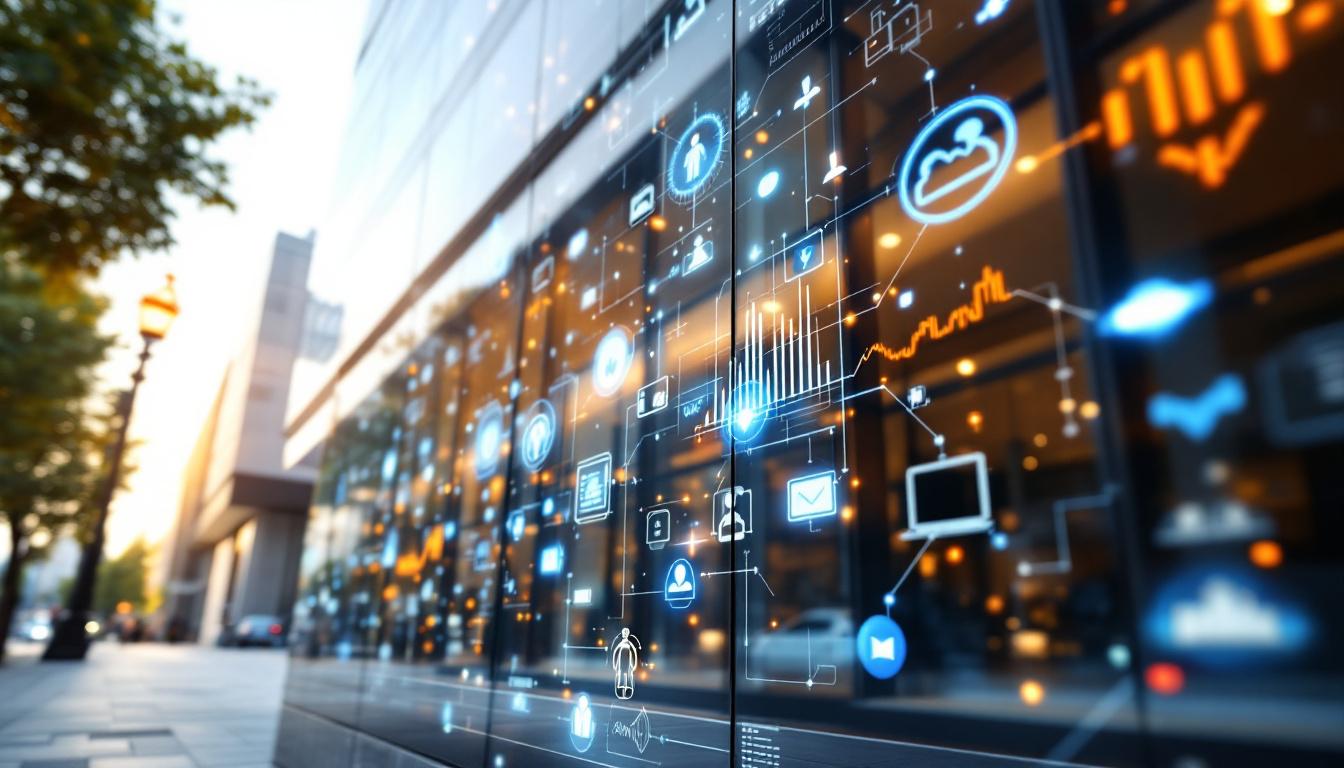
Understanding Remote Monitoring in Healthcare
Remote monitoring, a cornerstone of digital health innovation, involves the use of advanced technology to continuously track and manage patients' health outside traditional clinical settings. By leveraging a variety of digital devices, healthcare providers can collect real-time data, enabling proactive and personalized healthcare management. This approach not only enhances patient engagement but also supports cost-effective and efficient healthcare delivery, especially crucial in managing long-term wellness and chronic conditions.
Types of Remote Patient Monitoring Technologies
 Remote patient monitoring (RPM) employs a variety of innovative digital devices and systems to track health data outside of traditional clinical environments. These technologies make it possible for healthcare providers to continuously assess patient conditions and intervene early if necessary.
Remote patient monitoring (RPM) employs a variety of innovative digital devices and systems to track health data outside of traditional clinical environments. These technologies make it possible for healthcare providers to continuously assess patient conditions and intervene early if necessary.
One of the most prevalent types of RPM is wearable devices. Examples include fitness trackers and smartwatches that monitor physical activity, heart rate, and sleep patterns. These devices are user-friendly and can provide valuable long-term data for managing chronic diseases such as cardiovascular conditions and diabetes.
In addition to wearables, home-based medical devices play a crucial role in RPM. Common tools include blood pressure cuffs for hypertension management, glucometers for blood glucose monitoring in diabetics, pulse oximeters measuring oxygen saturation, ECG systems for heart rhythm tracking, and thermometers for body temperature.
Beyond these, specialized devices further enhance remote monitoring capabilities. Smart scales enable accurate weight tracking, essential for heart failure patients or those managing obesity. Activity trackers monitor physical movement, while peak flow meters help in managing respiratory conditions like asthma.
Furthermore, maternal health monitors are used in prenatal care to track vital signs and fetal health, enabling remote management of pregnancy.
All of these devices are designed to transmit data in real-time via secure channels such as Bluetooth, Wi-Fi, or cellular networks directly to healthcare providers. This constant flow of information supports early detection of health issues, personalized treatment adjustments, and better patient engagement.
In conclusion, the diverse spectrum of RPM devices—including wearables, home medical equipment, and specialized tools—provides comprehensive, efficient, and personalized health management outside traditional healthcare settings.
How Remote Monitoring Works in Practice
 Remote patient monitoring (RPM) operates by utilizing digital devices—such as wearables, blood pressure monitors, blood glucose meters, and health apps—to gather patients’ vital health data from the comfort of their homes or other settings outside traditional clinics.
Remote patient monitoring (RPM) operates by utilizing digital devices—such as wearables, blood pressure monitors, blood glucose meters, and health apps—to gather patients’ vital health data from the comfort of their homes or other settings outside traditional clinics.
These devices can perform both automatic continuous measurements and periodic check-ins, depending on the device type and the patient's condition. For example, wearable sensors continuously track heart rate or oxygen levels, while blood glucose meters might require manual readings at scheduled times.
Data collected from these devices are transmitted to healthcare providers through internet connections like cellular networks, Bluetooth, or Wi-Fi. This seamless data transfer ensures real-time or near-real-time communication, enabling clinicians to monitor patient health constantly and respond promptly to any abnormalities.
Once received, the data is integrated into electronic health records (EHRs). This centralization allows for comprehensive clinical assessments, trend analysis, and informed decision-making.
The system allows ongoing evaluation of vital signs, symptoms, and overall health trends, giving healthcare providers a detailed picture over time. This continuous assessment can detect early signs of deterioration or improvements, prompting timely interventions.
Patients are active participants in their care—they perform routine measurements using their devices and sometimes even adjust treatments based on insights gained from the data. Encouraging patient engagement not only boosts adherence to care plans but also fosters a sense of empowerment.
Altogether, remote patient monitoring makes healthcare more proactive and personalized. It enhances the ability to manage chronic diseases effectively, reduces unnecessary hospital visits, and can contribute to better health outcomes and lower costs.
Benefits of Remote Patient Monitoring
What are the benefits of remote patient monitoring?
Remote patient monitoring (RPM) provides several advantages that enhance healthcare delivery and patient outcomes. One of its primary benefits is the ability to track patients’ health data continuously and in real time. This constant surveillance enables healthcare providers to detect early signs of deterioration or abnormalities in a patient's condition, facilitating prompt clinical intervention before serious complications develop.
Moreover, RPM significantly boosts patient engagement and self-care practices. By giving patients direct access to their health information, they become active participants in managing their conditions. Tools like wearable devices help patients monitor vital signs such as blood pressure, blood glucose, and weight, fostering better understanding and adherence to treatment plans.
Implementing RPM can lead to substantial cost savings for healthcare systems. It reduces unnecessary hospital admissions, emergency department visits, and in-person clinics, thereby conserving resources. This capability is especially valuable for underserved or remote populations, expanding access to quality healthcare without the need for frequent visits.
Long-term data collection and visualization support personalized care. Healthcare teams can analyze trends over time, adjusting treatments to suit individual patient needs. This approach not only improves health outcomes but also enhances patient satisfaction by providing tailored and responsive care.
Overall, RPM promotes a proactive, patient-centered model of healthcare that improves clinical decision-making, reduces costs, and enhances the quality of life for individuals with chronic or acute medical conditions.
Challenges and Limitations of Remote Monitoring

Are there any disadvantages or challenges associated with remote patient monitoring?
While remote patient monitoring (RPM) offers numerous benefits, it is not without its hurdles. One major concern revolves around data management and privacy. The vast amounts of health data generated require secure systems to prevent breaches and protect patient confidentiality. Ensuring compliance with regulations like HIPAA adds layers of complexity.
Technological barriers also present significant challenges. Reliable internet connectivity is crucial, but many rural or underserved areas still face connectivity issues. Moreover, some devices can be complicated for elderly or non-tech-savvy users to operate, leading to usability problems and potential inaccuracies.
Financial and reimbursement hurdles are another obstacle. Initial device costs, ongoing maintenance, and limited insurance coverage can be prohibitive for both patients and providers. In many cases, reimbursement policies are still evolving, which may discourage healthcare settings from fully adopting RPM.
Additionally, the influx of data from RPM devices can lead to clinician overload. Healthcare providers may struggle to interpret large volumes of information promptly, risking burnout and workflow disruptions. This data excess needs effective filtering and alerts to be truly beneficial.
Overall, addressing these issues is essential for the sustainable integration of RPM into routine healthcare, ensuring that technological and financial challenges do not outweigh its advantages.
Strategies for Successful Remote Monitoring Implementation
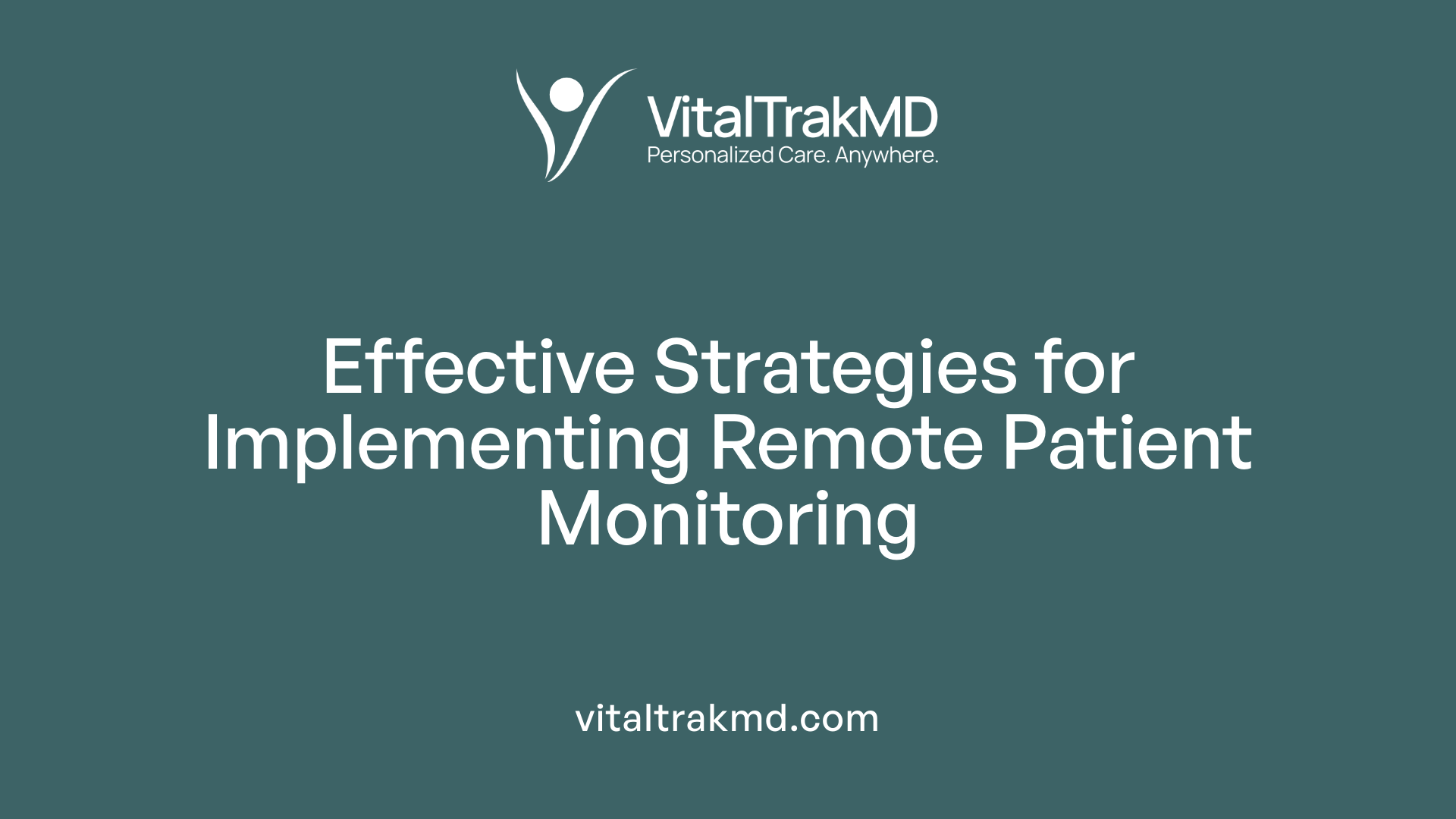 Implementing remote health monitoring systems requires a strategic approach that considers various factors to ensure effectiveness and sustainability.
Implementing remote health monitoring systems requires a strategic approach that considers various factors to ensure effectiveness and sustainability.
One of the first steps is conducting a patient needs assessment and engagement strategy. Healthcare providers should understand their patients’ specific health conditions, comfort with technology, internet access, and willingness to participate in remote monitoring. This helps tailor solutions that are acceptable and effective.
Choosing the right devices is also crucial. Reliable, user-friendly, and regulation-compliant medical devices—such as blood pressure cuffs, glucometers, pulse oximeters, and wearable sensors—are necessary. These devices should support secure data transmission through connectivity options like Bluetooth, Wi-Fi, or cellular networks and be compatible with electronic health record systems.
Developing clear clinical workflows is essential for smooth operation. This includes defining patient onboarding procedures, provider roles in data review, alert response protocols, and long-term care management. Integrating these workflows helps ensure timely and appropriate clinical actions.
Training and education for both healthcare providers and patients are fundamental components. Providers need to understand device operation and data interpretation, while patients require guidance on device use, data recording, and adherence to monitoring schedules.
Addressing systemic barriers is vital for success. Interoperability of health IT systems enables seamless data sharing. Reimbursement policies should be aligned to support remote monitoring services, and digital literacy programs can help bridge gaps among populations less familiar with technology.
In summary, effective remote health monitoring implementation hinges on understanding patient needs, selecting suitable devices, creating supportive workflows, educating users, and overcoming systemic hurdles. These strategies collectively foster efficient, patient-centered remote care that enhances outcomes.
The Future of Remote Monitoring in Healthcare
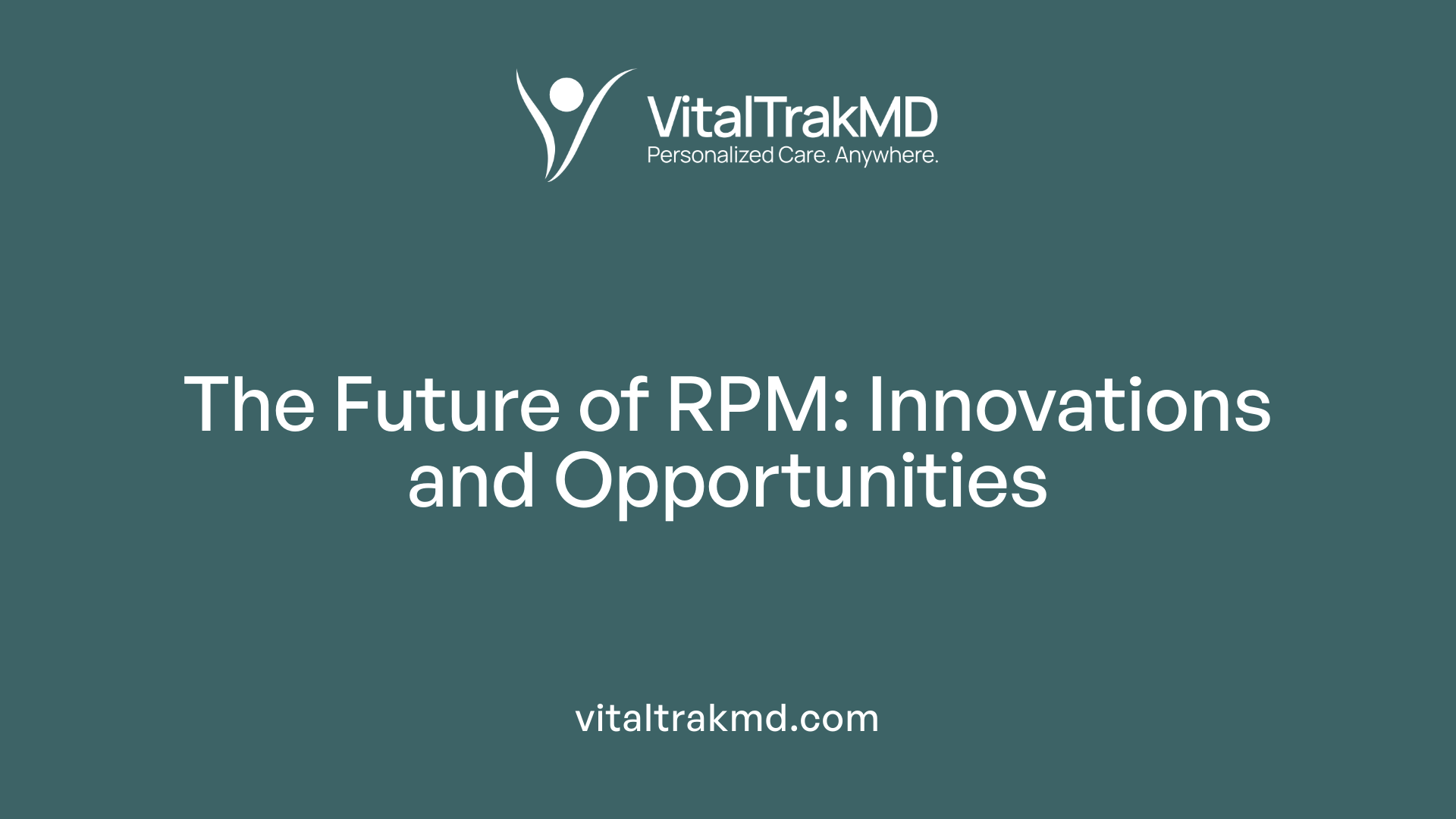
What is the future of remote patient monitoring?
The outlook for remote patient monitoring (RPM) is set for exciting expansion, fueled by rapid technological innovations. Advances in artificial intelligence (AI), 5G networks, and the proliferation of affordable wearable devices are transforming RPM into a more predictive and personalized healthcare tool.
AI algorithms will play a pivotal role in analyzing vast amounts of data collected from wearable sensors and medical devices. This means clinicians can anticipate health issues before symptoms fully manifest, enabling early intervention and better management of chronic conditions.
The integration of 5G technology will allow for faster, more reliable data transmission, supporting real-time monitoring across a broader range of healthcare settings. Wearable devices will become more user-friendly, comfortable, and capable of capturing detailed health metrics, encouraging longer-term patient engagement.
Beyond traditional applications, RPM is expected to expand into behavioral health—using digital tools to monitor mental health states via patterns in sleep, activity, and physiological markers. It will also foster holistic treatment approaches for complex, multi-morbidity cases, providing continuous data streams that inform comprehensive care plans.
Policy developments and reimbursement models will likely evolve to support this growth. Governments and insurance providers are increasingly recognizing the value of RPM, which promotes adoption through expanded coverage and incentives.
Furthermore, seamless integration with electronic health records (EHRs) will enhance care coordination, ensuring that patient data is securely stored and easily accessible to all relevant providers. Improved cybersecurity measures will safeguard sensitive health data, addressing privacy concerns that have historically hindered wider adoption.
Efforts will continue to address disparities in access, especially for rural and underserved populations. To bridge the digital divide, initiatives will include deploying low-cost devices, expanding broadband connectivity, and designing culturally appropriate RPM tools.
Overall, RPM will become embedded as a core component of healthcare delivery. Its capacity to improve health outcomes while reducing costs makes it a cornerstone of future medical practice—aiming for a more proactive, equitable, and data-driven healthcare system.
Harnessing the Power of Remote Monitoring for Better Health
As technology continues to advance, remote patient monitoring stands as a transformative force in long-term wellness management. By enabling continuous, real-time health data collection and analysis, RPM fosters proactive care, improves health outcomes, and enhances patient engagement. Overcoming current challenges through strategic implementation will pave the way for greater integration, accessibility, and personalization in healthcare. Embracing these innovations promises a future where healthcare is more accessible, efficient, and tailored to individual needs, truly redefining the landscape of long-term wellness.
References
- Benefits and Challenges of Remote Patient Monitoring as Perceived ...
- Introduction to telehealth and remote patient monitoring
- Background - Remote monitoring for long-term physical ... - NCBI
- What Is Remote Patient Monitoring (RPM)? - Oracle
- The Top 13 Benefits of Remote Patient Monitoring
- Benefits of Remote Monitoring for Patients and Healthcare Providers
- Remote Patient Monitoring for Mental Health Care - Tenovi
- Remote Patient Monitoring Implementation Playbook overview
Recent articles
Want to Feel Better and Live Healthier?
Join hundreds of patients taking control of their health with personalized care that fits their life – not the other way around.
Rated 4.8/5 by 32+ customers



